Refine search
Actions for selected content:
13588 results in History of science and technology
Sarah Ferber, Bioethics in Historical Perspective. Basingstoke: Palgrave Macmillan, 2013. Pp. xiv + 233. ISBN 978-1-4039-8724-2. £18.99 (paperback).
-
- Journal:
- The British Journal for the History of Science / Volume 48 / Issue 3 / September 2015
- Published online by Cambridge University Press:
- 10 August 2015, pp. 537-538
- Print publication:
- September 2015
-
- Article
- Export citation
BJH volume 48 issue 3 Cover and Back matter
-
- Journal:
- The British Journal for the History of Science / Volume 48 / Issue 3 / September 2015
- Published online by Cambridge University Press:
- 10 August 2015, pp. b1-b7
- Print publication:
- September 2015
-
- Article
-
- You have access
- Export citation
Weathering the empire: meteorological research in the early British straits settlements
-
- Journal:
- The British Journal for the History of Science / Volume 48 / Issue 3 / September 2015
- Published online by Cambridge University Press:
- 03 August 2015, pp. 475-492
- Print publication:
- September 2015
-
- Article
- Export citation
The Problem of University Courses on Infinitesimal Calculus and Their Demarcation from Infinitesimal Calculus in High Schools – ERRATUM
-
- Journal:
- Science in Context / Volume 29 / Issue 4 / December 2016
- Published online by Cambridge University Press:
- 21 July 2015, p. 523
- Print publication:
- December 2016
-
- Article
-
- You have access
- HTML
- Export citation
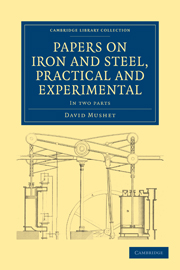
Papers on Iron and Steel, Practical and Experimental
-
- Published online:
- 05 July 2015
- Print publication:
- 20 January 2011
- First published in:
- 1840
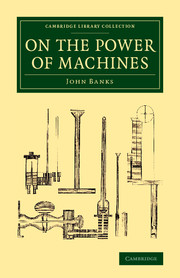
On the Power of Machines
-
- Published online:
- 05 June 2015
- Print publication:
- 21 August 2014
- First published in:
- 1803
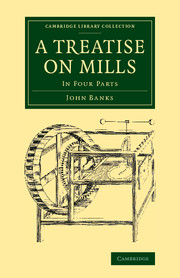
A Treatise on Mills
- In Four Parts
-
- Published online:
- 05 June 2015
- Print publication:
- 24 July 2014
- First published in:
- 1795
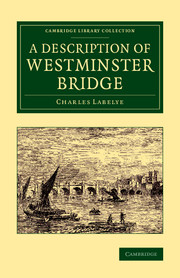
A Description of Westminster Bridge
- To Which Are Added, an Account of the Methods Made Use of in Laying the Foundations of its Piers
-
- Published online:
- 05 June 2015
- Print publication:
- 21 August 2014
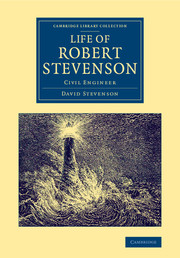
Life of Robert Stevenson
- Civil Engineer
-
- Published online:
- 05 June 2015
- Print publication:
- 28 August 2014
- First published in:
- 1878
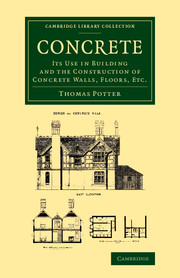
Concrete
- Its Use in Building and the Construction of Concrete Walls, Floors, Etc.
-
- Published online:
- 05 June 2015
- Print publication:
- 10 July 2014
- First published in:
- 1877
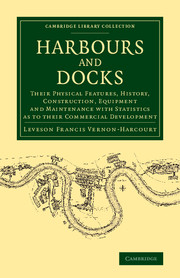
Harbours and Docks
- Their Physical Features, History, Construction, Equipment and Maintenance with Statistics as to their Commercial Development
-
- Published online:
- 05 June 2015
- Print publication:
- 21 August 2014
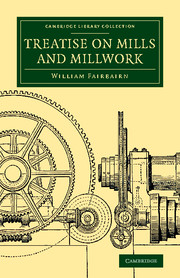
Treatise on Mills and Millwork
-
- Published online:
- 05 June 2015
- Print publication:
- 21 August 2014
- First published in:
- 1861
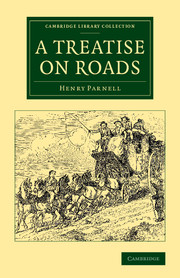
A Treatise on Roads
- Wherein the Principles on Which Roads Should Be Made Are Explained and Illustrated, by the Plans, Specifications, and Contracts Made Use of by Thomas Telford, Esq., on the Holyhead Road
-
- Published online:
- 05 June 2015
- Print publication:
- 25 September 2014

A Memoir on Suspension Bridges
- Comprising the History of their Origin and Progress, and of their Application to Civil and Military Purposes
-
- Published online:
- 05 June 2015
- Print publication:
- 21 August 2014
- First published in:
- 1832
Otto Toeplitz's 1927 Paper on the Genetic Method in the Teaching of Mathematics
-
- Journal:
- Science in Context / Volume 28 / Issue 2 / June 2015
- Published online by Cambridge University Press:
- 21 May 2015, pp. 285-295
- Print publication:
- June 2015
-
- Article
- Export citation
The Problem of University Courses on Infinitesimal Calculus and Their Demarcation from Infinitesimal Calculus in High Schools1
-
- Journal:
- Science in Context / Volume 28 / Issue 2 / June 2015
- Published online by Cambridge University Press:
- 21 May 2015, pp. 297-310
- Print publication:
- June 2015
-
- Article
- Export citation
Modernizing Science: Between a Liberal, Social, and Socialistic University – The Case of Poland and the University of Łódź (1945–1953)
-
- Journal:
- Science in Context / Volume 28 / Issue 2 / June 2015
- Published online by Cambridge University Press:
- 21 May 2015, pp. 215-236
- Print publication:
- June 2015
-
- Article
- Export citation
SIC volume 28 issue 2 Cover and Front matter
-
- Journal:
- Science in Context / Volume 28 / Issue 2 / June 2015
- Published online by Cambridge University Press:
- 21 May 2015, pp. f1-f3
- Print publication:
- June 2015
-
- Article
-
- You have access
- Export citation
SIC volume 28 issue 2 Cover and Back matter
-
- Journal:
- Science in Context / Volume 28 / Issue 2 / June 2015
- Published online by Cambridge University Press:
- 21 May 2015, pp. b1-b3
- Print publication:
- June 2015
-
- Article
-
- You have access
- Export citation
The Right Time for the Job? Insights into Practices of Time in Contemporary Field Sciences
-
- Journal:
- Science in Context / Volume 28 / Issue 2 / June 2015
- Published online by Cambridge University Press:
- 21 May 2015, pp. 237-258
- Print publication:
- June 2015
-
- Article
- Export citation
